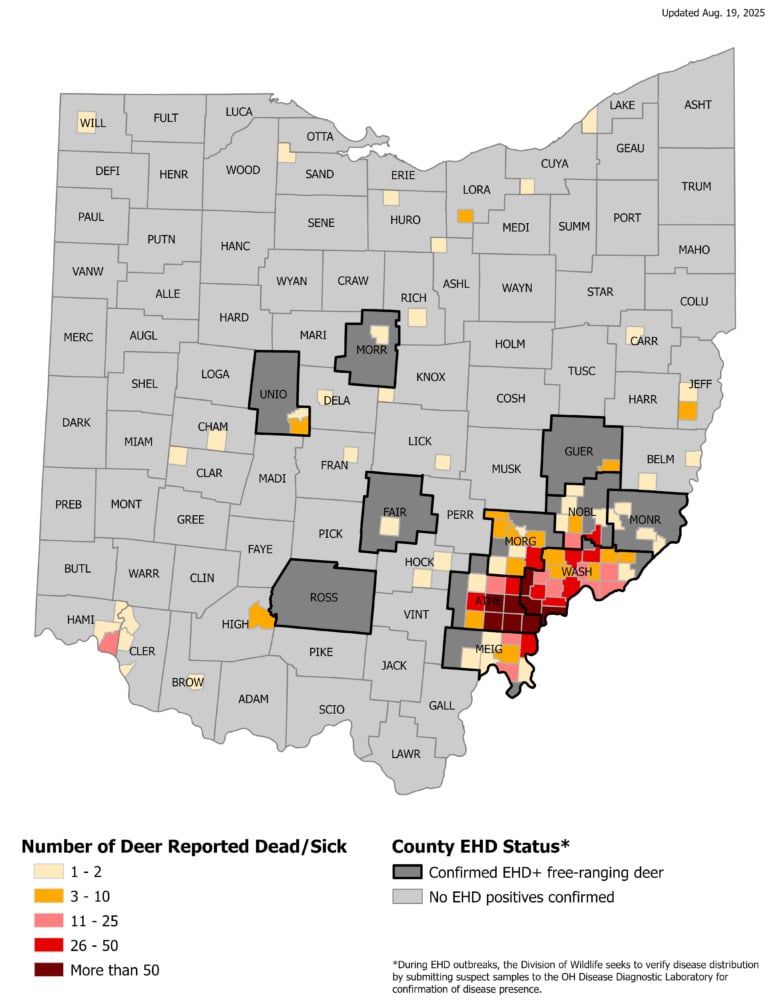If you’ve noticed a deer acting strange or found one that didn’t make it, you’re not alone.
The Ohio Division of Wildlife is asking people to report dead or sick deer as they track an outbreak of epizootic hemorrhagic disease (EHD) across the state.
EHD is spread by tiny biting flies called midges.
While it is not dangerous to humans or pets, it can hit deer populations hard. Once bitten, deer typically start showing symptoms in just a few days, like acting disoriented, losing their usual fear of people, or just seeming off. Unfortunately, there is no treatment, and many deer die within 36 hours of symptoms appearing.
Right now, the largest number of reports are coming from Athens and Washington counties near the Pennsylvania border, but confirmed cases have also popped up in Union, Morrow, Fairfield, and Guernsey counties. Dead deer are often found near water and may show swelling around the head, neck, or eyelids.

While this might sound alarming, experts say deer populations usually bounce back within a couple of years after an outbreak. Still, hunters in affected areas might notice fewer deer and possibly tighter bag limits in future seasons. For now, the rules for this fall’s bow hunting season, starting September 27, are not changing.
The good news is that EHD does not spread to humans.
Eating venison from an infected deer is not considered risky either, but ODNR says you should never eat an animal that looks sick, since you cannot know what it is carrying without testing.
So what should you do if you spot a deer that looks sick or find one that is already dead? Report it to the Division of Wildlife’s online wildlife reporting system. Your reports help officials track how widespread and severe the outbreak is.
In the meantime, if you see a deer that seems a little too friendly or is hanging out in the wrong places, keep your distance and make a note for the folks at ODNR.




